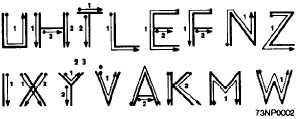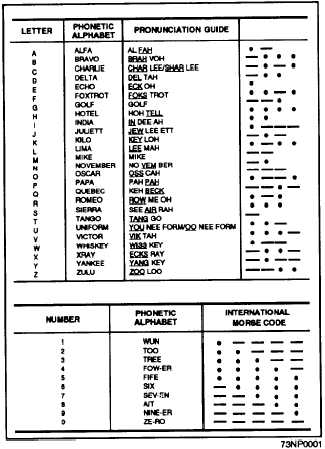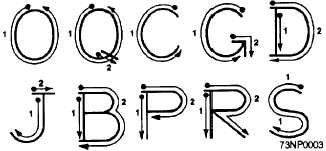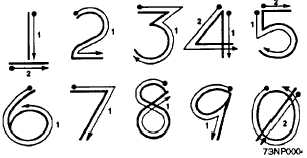Phonetic Alphabet
Some of the words called out may not have made
much sense to you—words like ALFA, YANKEE, and
DELTA. To experienced communicators they mean
the letters A, Y, and D. The Signalman was using the
phonetic alphabet, a system set up in which each letter
of the alphabet has a word equivalent. It is used widely
in naval communications, to avoid mistaking letters
that sound alike, such as B and C or M and N. You will
have to know this alphabet before you can go any
further in communications, so study the alphabet and
the proper pronunciation, as shown in figure 1-1. It is
not very difficult, and you should not have any trouble
mastering it in a few days.
Lettering
The accuracy of communications, especially of coded
messages, depends on exact adherence to procedures and
on legibility of writing. For this reason it is necessary that
all letters and numerals be distinctly and legibly made, not
only so that you can read them but also so that they can be
easily read by anyone else. If you write a letter or
numeral and it is mistaken for some similar letter or
numeral, confusion will result. Often one mistake can
change the entire meaning of a message. This can be
disastrous when lives and ships are at stake.
Figures 1-2, 1-3, and 1-4 show how letters and
figures should be formed and what sequence should
be followed in making the various strokes.
To ensure uniformity, it is necessary that letters
and numerals be printed and that you learn the
following system of lettering:
1. A straight line is the foundation stroke. The
letters E, H, and F have the center horizontal stroke
slightly above the middle. The strokes of the letters X,
Y, and K join slightly above the middle.
2. The letters O, Q, C, and G are made as circles.
The letter B is slightly smaller at the top and has the
center horizontal part slightly above the middle. The
letters R and S are slightly smaller at the top.
Figure 1-1.—Phonetic and Morse code alphabet.
Figure 1-4.—Numerals.
Figure 1-2.—Straight-line lettering.
Figure 1-3.—Circular lettering.
1-3









